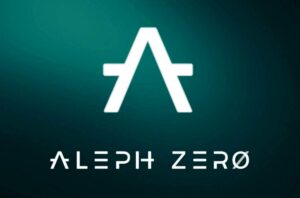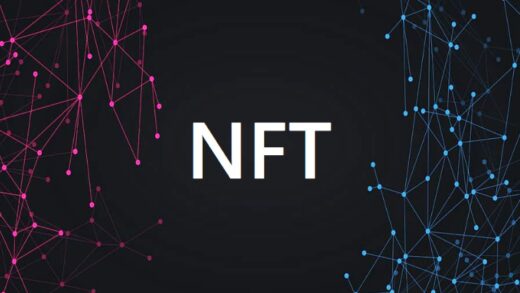Cryptocurrency staking has emerged as a highly lucrative investment strategy in recent years. As the crypto market continues to evolve, staking has gained traction for its potential to generate significant rewards for crypto enthusiasts. In this article, we will explore the top 10 cryptocurrencies to stake that are expected to skyrocket your staking game in 2024. Whether you are a seasoned investor or new to the crypto world, this comprehensive guide will provide valuable insights to help you make informed investment decisions.
What is cryptocurrency staking?
Cryptocurrency staking refers to the process of holding and securing a particular cryptocurrency in a wallet to support the operations of a blockchain network. By staking their tokens, individuals contribute to network validation, consensus mechanisms, and security. In return, they are rewarded with additional tokens or incentives. Staking provides an alternative to traditional mining, which involves high energy consumption and specialized hardware.
How does staking differ from other forms of crypto investment?
Unlike other forms of crypto investment such as trading or holding, staking offers a unique opportunity to earn passive income simply by holding and supporting a cryptocurrency network. Instead of relying solely on market fluctuations, staking offers a more sustainable and potentially more predictable source of income. Additionally, staking promotes the stability and security of blockchain networks, making it a win-win for both investors and the crypto community at large.
Importance of choosing the right cryptocurrencies for staking
Choosing the right cryptocurrencies for staking is crucial to ensure the maximum growth and profitability of your investment. Not all cryptocurrencies are created equal, and each project has its unique attributes and potential risks. By carefully evaluating the project’s team, technology, scalability, security measures, network stability, and decentralization, you can minimize your risks and maximize your rewards. In the following sections, we will dive deeper into these considerations and explore the top 10 staking cryptocurrencies for 2023.
Staking vs. mining: a comparison of rewards and risks
While staking and mining share the common goal of validating and securing blockchain networks, they differ in their approach and associated rewards and risks. Mining typically requires substantial upfront investment in hardware and electricity costs. Additionally, mining rewards can be subject to market fluctuations and the increasing competition for block rewards. On the other hand, staking offers a lower barrier to entry and a potentially more stable and predictable source of income. However, staking does expose investors to risks such as potential bugs or vulnerabilities in the staking protocol and the possibility of slashing, where staked assets can be partially or entirely confiscated due to certain network conditions.
Benefits of Staking coins
- Less costly. PoS does not require you to invest in costly hardware and is more energy-efficient than PoW.
- PoS is environment-friendly. Users are offered guaranteed returns, unlike PoW. The value of the staked coins does not fall unless there is a change in their market value.
- Stakers can delegate their voting rights to a third party. In return, delegates can earn a return and pay dividends to their supporters.
Recommended Articles:
- List of wallets supporting one-click easy staking of PoS coins
- List of SaaS (Staking-as-a-Service) Providers to stake PoS Coins
Best Cryptocurrencies To Stake [Highly Profitable]

Looking for Best paying Proof of Stake (pos) Coins? We added some Highest-paying Proof of Stake (PoS cryptocurrency). These best staking coins are a safe way to earn passive income if you have invested and holding them for the long term. Below is enlisted some of the best PoS cryptocurrencies to stake:
PolkaDot

Polkadot is a multi-chain network that intends to facilitate blockchain interoperability. Staking is a key function in the Polkadot ecosystem, allowing players to protect the network, validate transactions, and earn rewards in exchange.
Staking in Polkadot entails locking up a particular quantity of DOT tokens, the Polkadot network’s native cryptocurrency, in order to participate in the network’s consensus mechanism. The process of staking DOT tokens contributes to the network’s security and overall integrity.
Participants can become validators or suggest validators by staking DOT tokens. Validators are in charge of creating blocks, validating transactions, and ensuring the network’s security. Nominators, on the other hand, choose reliable validators and share the benefits created by those validators. Staking Reward: 14% – 15%.
Solana

Solana is a scalable blockchain that was created with efficiency in mind. Solana’s minimal fees and speedy transactions enable this scalability. SOL is one of the greatest staking currencies due to the quickness with which transactions are completed and the minimal cost of doing so. Most transactions are completed in a matter of seconds. While you cannot operate your own node when staking on the Solana network, you can stake your coins with over 640 validators.
When you delegate your stake to Solana validators, you will be able to share in the rewards that these persons get. Staking Reward: 6% – 7%.
Tezos

Tezos is a multipurpose and open-source platform built for developing dApps and secure smart contracts with new technological innovations and another option for best staking coins. XTZ is the digital currency of the platform and is issued through a process called baking. Bakers earn their rewards through their deposits in the network. Each block baked in the process is validated and authenticated and in case of any breach in protocol bakers lose their deposits. List of Best Tezos Bakers. All stakeholders can participate in the network through baking or delegating and earn rewards (6% – 7%).
COSMOS

COSMOS often referred to as the ‘Internet of Blockchains’ is a one-time solution for the problems of interoperability and scalability that blockchain currently faces today. COSMOS provides easy communication between the different blockchains and also secures fast and easy transactions throughout the networks.
ATOM is the official coin of COSMOS. Stakeholders can delegate their authority to chosen validators and earn rewards. Validators in return earn dividends. However, if a validator corrupts the network, the delegator will be responsible and might lose his/her stake in the network. Staring Rewards: 20% – 21%.
Aleph Zero (AZERO)

Aleph Zero is a Layer-1 permissionless blockchain and employs a Proof-of-Stake (PoS) consensus mechanism. However, it sets itself apart from other PoS blockchains by utilizing its own unique and peer-reviewed AlephBFT consensus protocol. This protocol incorporates a directed acyclic graph (DAG) as an intermediary structure for processing transactions.
It’s important to note that Aleph Zero itself is not transformed into a DAG, which enables the network to achieve transaction speeds that are unmatched by most other blockchains. Even in situations of asynchronicity, the network remains secure and capable of verifying transactions. It can promptly arrange blocks in the correct order once it returns to normal operation. AZERO is the native cryptocurrency and its staking reward is 11-12%
Hydra (HYDRA)

Hydra is a permissionless, open-source, proof-of-stake blockchain that is based on the open-source projects QTUM, Bitcoin, Ethereum, and BlackCoin’s PoV v3. It encourages stakeholders and market participants to contribute to its truly decentralised architecture in addition to a number of novel economic features. Fixed transaction costs in USD are charged by Hydra and are dynamically determined based on market rates. As a result, enterprises creating on-chain have predictability, which lowers the risk of doing so. HYDRA is the native cryptocurrency and its staking reward is 41-42% .
Secret Network (SCRT)

Built on Cosmos, Secret (SCRT) is a privacy-focused blockchain. Its smart contracts, known as Secret Contracts, function similarly to smart contracts on other blockchains by enabling DApps to access private data on Secret. Secret Contracts, however, convert encrypted inputs into encrypted outputs without disclosing any data. Due to the encrypted contract states during execution, this is made possible. SCRT is the native cryptocurrency and its staking reward is 27-28%
Kava (KAVA)

Kava is a Layer-1 blockchain that combines Cosmos’s speed and compatibility. With the help of its Cosmos EVM technology, which provides the highest level of scalability, performance, security, and developer support, Kava was designed from the ground up to optimise its resources for protocol growth. Builders on Kava receive a portion of Kava Rise’s $750M developer incentive money through the program’s blockchain-based distribution system, which is intended to reward the top protocols each month depending on usage. KAVA is the native cryptocurrency and its staking reward is 16-17%
Zilliqa (ZIL)
![]()
Zilliqa is a permissionless, public blockchain with the capacity to process thousands of transactions per second. By using sharding as a second-layer scaling approach, it attempts to address the problem of blockchain scalability and performance. The platform hosts a large number of decentralized applications and, as of October 2020, it now supports yield farming and staking. ZIL is the native cryptocurrency and its staking reward is 12-13%
Osmosis (OSMO)

Using the Inter-Blockchain Communication Protocol (IBC), Osmosis (OSMO) is a decentralized exchange (DEX) for Cosmos, an ecosystem of independent, interoperable blockchains. Osmosis also provides non-IBC assets that are connected to the Polkadot and Ethereum ecosystems. Osmosis, which was initially built on Balancer-style pools, is switching to a concentrated liquidity architecture that is more sustainable and offers a better trading and liquidity provision experience. SCRT is the native cryptocurrency and its staking reward is 10-11%
Conclusion
Crypto Staking offer a compelling investment opportunity for crypto enthusiasts looking to earn passive income and support the growth of blockchain networks. By carefully evaluating factors such as the project’s team, technology, scalability, security measures, network stability, and decentralization, investors can choose the most promising staking cryptocurrencies for their investment portfolios. It is important to conduct thorough research, diversify investments, and stay updated on market trends to make informed decisions. In our lis of best staking crypto coins crypt we selected these cyptos not only on the basis of percentage of rewards. We con











![[Sponsored] STG Energy Launches Breakthrough Cloud Mining Product to Democratize Crypto Mining 21 STG mining](https://coinfunda.com/wp-content/uploads/2025/02/STG-mining-520x293.webp)
![[Sponsored] Centralhash cloud mining platform easily obtains 100,000 US dollars of 22 central hash](https://coinfunda.com/wp-content/uploads/2025/02/central-hash-512x293.webp)